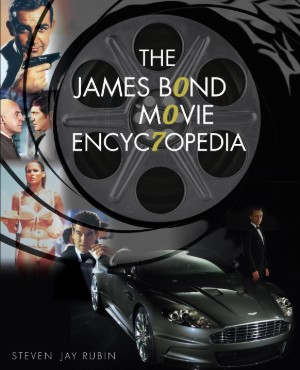(August 20, 1911–????): Pinewood Studios construction manager, and production designer Ken Adam’s right-hand man on many of the early James Bond films. Udell’s motto, which Adam took literally, was “If you can draw it, we can build it.” Udell and his team of craftsmen at Pinewood encouraged Adam during the early days of the Bond series to try out new materials and techniques that were within the series’ initially low budgets. When the film series took off, Udell was intimately involved in the huge set constructions that became a trademark of the Bond films, including the interior and exterior of Fort Knox in Goldfinger and the huge volcano missile base in You Only Live Twice.
Udell’s first film at Pinewood was the classic suspense thriller Green for Danger (1946). By the mid-1950s, he was one of six construction managers who supervised all construction at Pinewood. He worked closely with the other five: Harold Combden, Bill Surridge, Jock Lyall, Bert Mansell, and Ted Hughes. Each team moved from construction to construction, and there was a camaraderie among the various teams that is unknown today. It was common for Udell to be involved in as many as six to eight films at once. He was appointed chief construction manager for the studio in 1969.
Udell’s relationship with Ken Adam had begun on The Hidden Room (1949), a suspense thriller directed by Edward Dmytryk. For Dr. No in 1962, Udell was delighted to work on the unusual sets designed by Adam for the film. “We had a budget of 17,000 pounds for all of the interiors,” he recalled. “We had just enough money to finish everything except the most important set: Dr. No’s reactor room. Since the producers were extremely happy with the rushes, they went back to United Artists and fought for another 7,000 pounds to finish the reactor room.
“We used a lot of fiberglass on Dr. No, which was a new material. We gave it a metallic finish with an Italian jewelry spray. For the reactor room, which was built on Stage E, Ken originally wanted one slick catwalk—where Bond has the fight with Chang, the fuel elements technician—with no visible means of suspension. For safety reasons, we convinced him to design two supports into the set.”[1]
Though Bill Surridge supervised the constructions for From Russia with Love, Udell was heavily involved on Goldfinger. One of his initial assignments was to build a ramp for the out-of-control Mercedes-Benz that goes over a cliff and slams into a side of the Auric Enterprises building. “We went to the Harefield Quarry for the stunt,” Udell remembered, “and we discovered that the only place we could build the ramp was over a pigsty. So that’s exactly where we built it. While John Stears and his crew filled the car with petrol jelly, all of these pigs were constantly bleating.”
Six months before Goldfinger began principal photography, Udell was planting an avenue of trees that would eventually lead up to his Fort Knox replica, which was built full scale in the Black Park woodland next to the studio. The trees were identical to ones photographed during a helicopter tour of the actual Fort Knox in Kentucky. Udell also remembered the difficulty of maneuvering the one-ton vault door from the interior stage to the outdoor set, where US troops battled Goldfinger’s Grand Slam Task Force.
For Thunderball, Udell and his team journeyed to a Royal Air Force base in Alton, where a plaster mold was made of a full-scale Vulcan bomber. The mold was then taken to the Bahamas, where the bomber was constructed out of fiberglass and then lowered into the Caribbean off Nassau’s Clifton Pier. A separate bomb bay was constructed and photographed from underneath for when Bond explores the wreck of the bomber.
Between February and May 1965, Udell was consumed by the Thunderball project—one of the most expensive films ever based at Pinewood to that point. But even Thunderball paled in comparison to You Only Live Twice, which involved the construction of a full-scale rocket base within the cone of an extinct volcano.
Udell retired from Pinewood Studios in August 1976, a month before principal photography began on The Spy Who Loved Me. He has since passed away, but a date of death was not available at press time.
[1] Ronald Udell, interview by Steven Jay Rubin, London, June 19, 1977.

